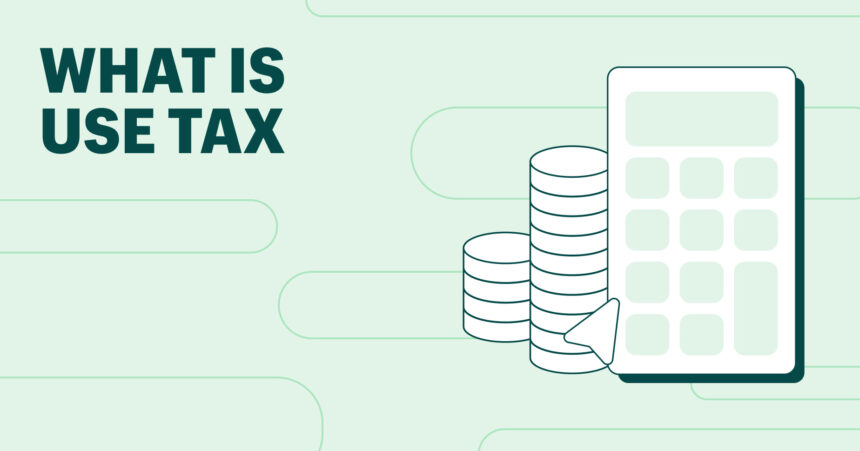Most state laws require consumers to pay sales tax on goods and services they purchase.
Typically, merchants collect local sales tax and remit it to state and local governments. However, if an out-of-state retailer does not collect sales tax, the burden shifts to the consumer, who must calculate the amount they pay for each taxable item they purchase and pay it directly to their state and local governments. This tax is classified as a consumer use tax.
What is Use Tax?
Use tax is a mandatory tax on goods and services that was not collected as sales tax at the time of purchase. If your local tax and fee administration agency levies sales tax as a percentage of the purchase price, that tax must be paid regardless of whether the seller collects it.
This means that if you purchase products from out-of-state sellers who don’t collect tax, you must calculate your use tax rate and pay the tax directly to your state and local governments.
Local use tax rates are the same as local sales tax rates. Let’s say you live in an area where the local tax rate on retail purchases is 5%. You order a $440 TV online, and the seller is supposed to add 5% to the sale price. If the online retailer chooses not to collect tax, the burden shifts to you, the buyer. You must calculate and remit use tax on taxable items. Because the use tax rate is the same as the sales tax rate, your tax liability is $22.
What is the purpose of the use tax?
Use taxes serve the same purpose as sales taxes and value-added taxes (VATs): They fund state and local initiatives such as infrastructure, government administration, lending programs, and elder care.
In some jurisdictions, sales and use taxes are the largest source of government revenue in a calendar year. However, states without sales or use taxes, e.g. Montana and OregonGovernment revenue has to come from other sources such as property taxes, income taxes and management fees.
When do I pay use tax?
Each state has its own laws governing when use taxes are due. Many states allow residents to pay use taxes every calendar year.
For example, the California Department of Taxation and Fee Administration (CDTFA) allows residents to pay their use tax on April 15th, the same day as federal and state income tax filing deadlines. CDTFA also allows residents to pay the tax due with each purchase, which may reduce recordkeeping burdens for some buyers. Contact your state’s tax department for information about laws specific to your location.
Use and sales taxes
Use taxes and sales taxes are two sides of the same coin. They are levied at the same rates and fund the same programs. The difference is how and when the taxes are collected.
What are the similarities?
Sales and use taxes are levied at the same rate. For example, if your city’s sales tax is 7.85%, your use tax is also 7.85%. Sales and use taxes also fund the same programs. And the two taxes apply to the same retail items. If your state imposes a sales tax on furniture but not on groceries, it will impose a use tax on furniture but not on groceries.
Sales and use tax is only levied by the state in which the purchaser resides. For example, if a purchaser in Idaho purchases a product from an online seller in Oregon, the Oregon seller does not charge sales tax because Oregon does not have a sales tax. In this case, the Idaho purchaser is required to pay use tax because Idaho taxes retail purchases.
What’s the difference?
The difference between sales tax and use tax is how they are collected. Collect sales tax Sales tax is remitted to the government by the purchaser. Use tax is only payable if sales tax was not paid when the taxable item was purchased. If you have already paid sales tax, you do not have to pay use tax.
Use Tax Examples
For example, if you are a California resident and you purchase a laptop online from a retailer in your state that doesn’t charge sales tax, or from a retailer that doesn’t charge sales tax on out-of-state purchases, it is your responsibility to pay the laptop’s use tax when the laptop is shipped to you in California. The tax rate is usually the same as your local sales tax.
The use tax applies to all tangible personal property used within the state, regardless of where it was purchased, helping to level the playing field between in-state and out-of-state sellers.
Use Tax FAQs
What is Use Tax?
Use tax is a conditional tax that must be paid by the buyer when sales tax is due but not collected. It applies to states and localities that impose sales tax on retail purchases. By law, retailers are supposed to collect sales tax at the time of purchase. If the retailer does not do so, the tax is still due. This tax is reclassified as a use tax and must be paid by the buyer to the state or local government.
What are examples of use taxes?
To visualize how use tax works in the real world, imagine a business doing business in a state with a 6% sales tax. An online retailer did not collect sales tax on the business’s business-related purchases. To make up for this, the business must remit use tax directly to the state. The use tax assessed would be 6% of the purchase price. However, if the online retailer added shipping charges, those would not be subject to sales or use tax.
What is the difference between sales tax and use tax?
Sales tax and use tax are essentially the same tax. They are levied at the same rates and on the same types of goods and services. The difference is that sellers collect and remit sales tax, while buyers calculate and pay use tax.
Do I have to pay use tax on my Amazon purchases?
No. As of 2017, Amazon has collected sales tax on purchases in all states. Because Amazon adds sales tax to your invoice for purchases, there is no use tax (additional tax) on Amazon orders.






